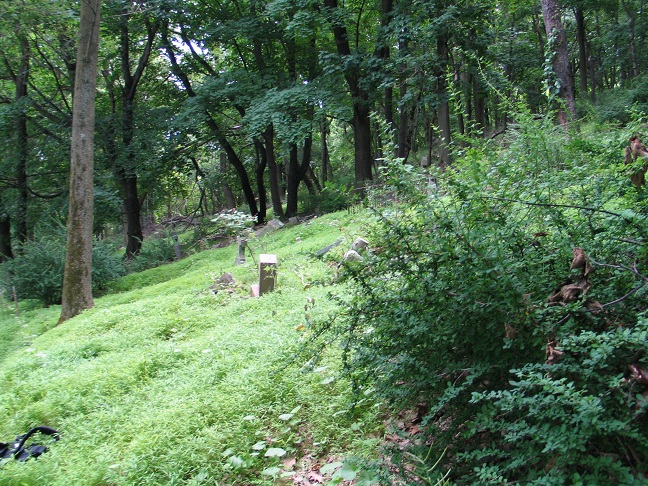This project was initiated by undergraduate
student Connor Messler under the guidance of
Dr. James Higgins and Dr. Laura Sherrod.
During the winter of 1918-19 there was an
outbreak of Spanish influenza in Bethlehem,
PA. The city was based around the steel
industry and had seen a large surge in
production and therefore population during
the First World War. The outbreak is
documented to have claimed nearly two
hundred lives, although the accuracy of this
number has been questioned by some. Those
hardest hit were the poor working class.
This group of immigrant workers had few or
no relatives living in the area, and thus no
one available to make funeral arrangements.
The task was appointed to the city, or done
through the church of the deceased. Records
from this time period are incomplete, but
there is evidence that suggests a mass
burial during the epidemic on South Mountain
in Bethlehem.
|
 |
 |
Geophysical surveying (GPR and magnetometer)
was performed in the summer of 2010 at St.
Michael's Cemetery located in South
Bethlehem, Lehigh County Pennsylvania. The
section of the cemetery surveyed is 19m by
13m and located on the south end of the
cemetery. The land was used by Holy Infancy
Roman Catholic Church from the mid 19th
through the early 20th centuries. The area
surveyed is of particular interest because
of the time period in which it was used.
Grave markers show that a large number of
burials took place during the Spanish
Influenza Outbreak of 1918-19. The terrain
is sloped and marked by many physical
obstructions. Due to vandalism, topography,
and vegetation many of the grave markers are
broken, shifted, or completely missing. A
three dimensional dataset was created to
image the subsurface burials. |